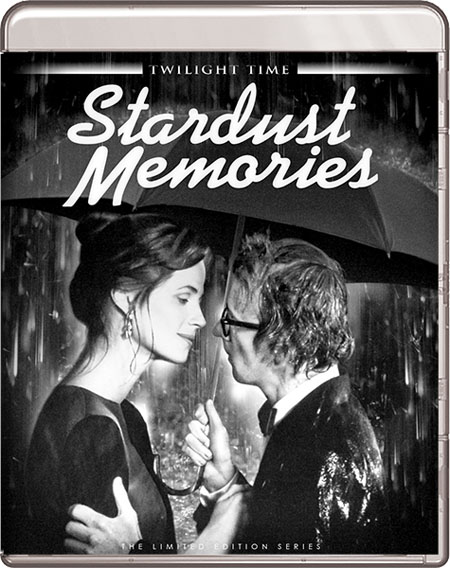
“ALLEN’S 9-1/2â€
By Raymond Benson
If
one facetiously counted the number of films Woody Allen made beginning in 1969
and throughout the 70s, there would be eight that he wrote and directed (seven
of which he also starred in), plus a movie that he only wrote and starred in—Play It Again, Sam, for which I’ll count
as 1/2, making Stardust Memories number
9-1/2. Appropriately, this film seems to intentionally pay homage to Federico
Fellini’s own masterwork, 8-1/2
(1963), which was about a filmmaker who didn’t know what movie he wanted to shoot
next. Stardust Memories, released in
1980 after the huge successes of Annie
Hall and Manhattan (with
critically-acclaimed Interiors in-between),
is also about a filmmaker in search
of the picture he wants to make.
It
wasn’t well-received at the time. I recall leaving the theater in anger. How
could Woody be so contemptuous of his audience? It was as if his character, the
rather egotistical and unlikable filmmaker Sandy Bates, hates his fans,
especially the ones who clamor for his “earlier, funnier moviesâ€â€”and of course
we couldn’t help but superimpose Sandy Bates with Woody Allen. And that’s where audiences misinterpreted the picture.
Bates is no more Allen than Marcello Mastroianni is Fellini in 8-1/2. While Allen (and Fellini) may
have infused their “alter-egos†with autobiographical aspects of themselves,
the characters were indeed fictional representations.
It’s
no secret that Allen often likes to mimic European filmmakers he admires—his
love of Ingmar Bergman is evident in several pictures. This time, with Memories, Allen does invoke Fellini and
that director’s signature stream-of-consciousness and non-linear storytelling
with flights of fantasy and surrealism. Filming in black and white for the
second time in a row, Allen, like Fellini, throws in outdoor circus scenes,
grotesque and freakish extras, radical editing techniques, and meandering love
affairs. Instead of coming off as mere imitation, though, Allen’s picture
succeeds on its own merits. It’s a challenging, highly intellectual piece of
cinema that must be viewed more than once to fully appreciate. Allen himself
has said that Stardust Memories is
one of his favorite films that he’s made. I’d place it in the upper third of
his by now numerous works.
The
story follows Sandy as he attempts to please his producers, the studio, the
fans, and himself—all the while haunted by the failed and tragic relationship
he had in the past with Dorrie (luminous Charlotte Rampling). Along the way
there are dalliances with other women (Jessica Harper and Marie-Christine
Barrault). The dream sequence at the opening of the film, in which Sandy is
trapped on a morbid, claustrophobic train from hell, while looking out at another train where inside there’s a
lively party going on (and young Sharon Stone blowing kisses at him through the
window), is one of Allen’s most memorable set pieces. The whimsical middle, in
which Sandy and Harper’s character escape a film festival to watch magic acts
in a field is pure effervescence. The jump cut close-ups of Rampling’s face
during a breakdown toward the film’s end is one of the most powerful sequences
Allen ever shot.
Then
there are the many familiar and unusual cameos that pop up—Tony Roberts,
Laraine Newman, Daniel Stern, Amy Wright, Brent Spiner, and even Allen’s ex-wife
and co-star Louise Lasser... Gordon Willis’ spectacular cinematography... Dick
Hyman’s wonderful adapted score of Cole Porter and other old-school tunes... it
all adds up. There is much to savor
in Stardust Memories.
Twilight
Time’s limited edition (only 3,000 units) Blu-ray sports a 1080p High
Definition picture that looks wonderful, along with a 1.0 DTS-HD Master Audio
soundtrack. The only supplements, sadly, are an isolated music score, a booklet with liner notes by Julie Kirgo and the
original theatrical trailer.
Stardust Memories was a divisive movie
for Allen fans, but time has been kind to it. Give it another go—you may be
surprised by how masterful and engaging it really is.
CLICK HERE TO ORDER